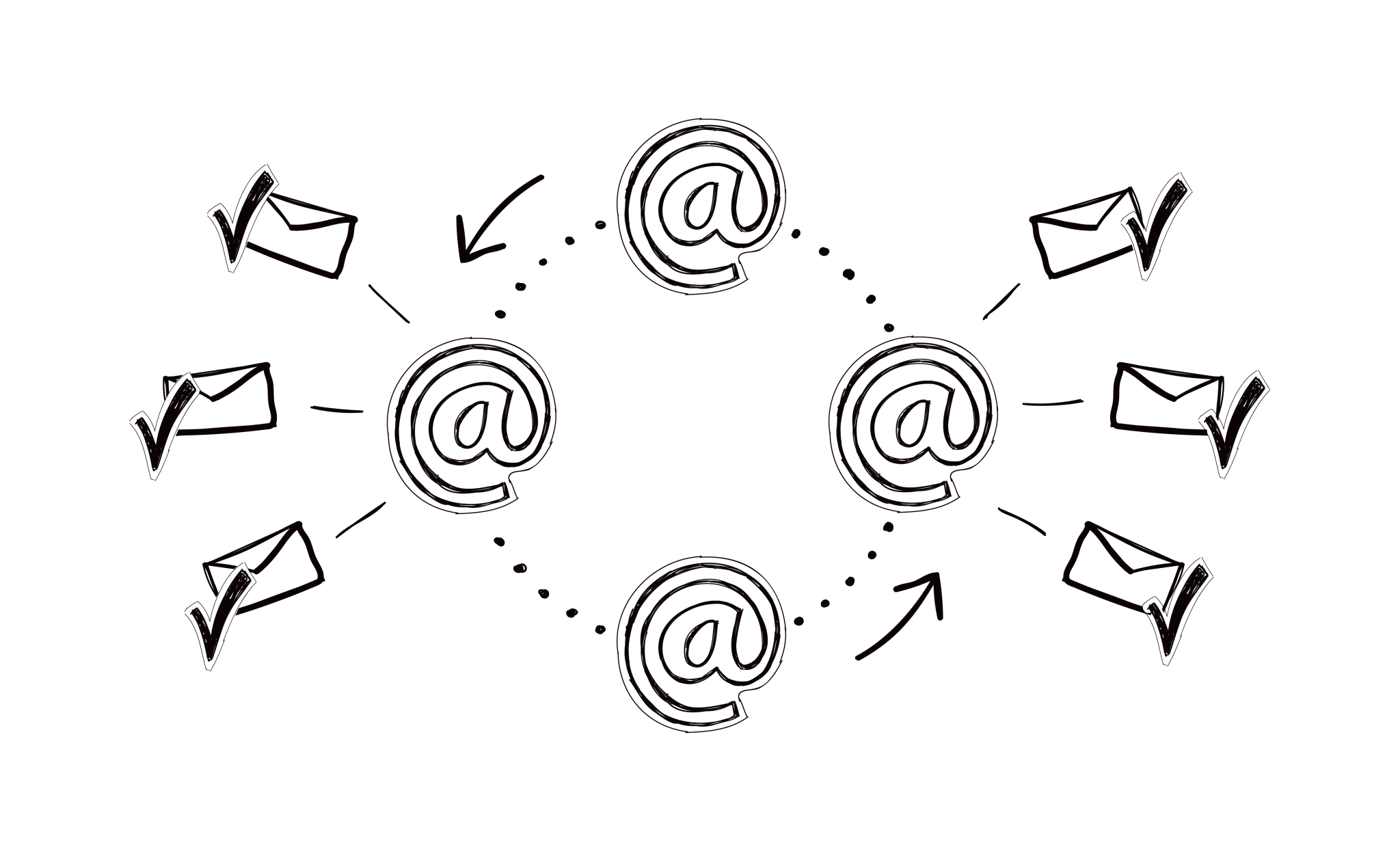Cold emailing is a powerful method for doing sales and marketing in just about any industry or niche. If you offer services, cold emails can be an effective way of getting new clients. But there is a catch – to get meaningful results, you need to do it the proper way.
Your potential client probably gets hundreds of weekly emails with offers similar to yours. To make your cold emailing efforts successful, all you need to do is follow this guide.
Why use cold emailing to reach potential clients?
Whether you’re an agency owner, freelancer or run a small business, learning how to write cold emails to potential clients should be on your to-do list. Here is why.
It’s (almost) free
Aside from using a paid tool here and there, writing cold emails is practically free. All it takes is finding the right person and sending them a nicely crafted personalized message. You don’t have to spend money on paid ads or third-party services.
You can get up close and personal
Cold emailing allows you to get in touch with the exact kind of people who would be interested in what you’re selling. Once you know the type of company you want to work with and the person you’re contacting, you can personalize the cold email to appeal to their specific pain point.
You get results quickly with cold emails
A cold email strategy typically yields results very quickly. If your target audience is interested, you can expect some responses to come in. If the first one does not work, a follow up email will.
On the other hand, building a blog and writing about your audience’s pain points can take months to start working.
You can experiment and split test
Whether you use cold email tools or send cold emails manually, you can modify and split-test various aspects of your cold emails. Using a different cold email template, trying out different subject lines, trying different contacts at a prospect’s company and more.
If one approach does not work, you can switch different elements and see what prospective clients react to the best.
How to write a cold email to potential client – step-by-step guide
We’ve determined that cold emails are a quick and relatively easy way to get in front of your prospects. Here is how you can do it yourself, even if you’ve never sent a cold email before.
Create a list of prospects
Your services are not going to be a fit for everyone, and that’s okay. If you offer writing and SEO services, for example, you’re looking for companies with a good marketing budget and an underperforming website.
Before writing a single subject line or cold email, you want to create a buyer persona first. This is your ideal customer whose pain points you solve, who has money to afford you and whom you’d love to work with. Here are a few things you should have written down:
- industry
- company size
- ideal budget
- pain points you solve
- how you solve that pain point and which angle you use to pitch your service
- ideal point of contact in the company
If you’re just starting out with cold emailing, you can find many of these details manually. Simply spend time on the company website and LinkedIn profile and you should find a good deal of information. However, if you want to do cold emails at scale, it’s better to use prospecting tools such as Lusha or Uplead to get prospect details at scale.
Write a cold email subject line
In 2023, the average person received and sent 340+ emails every day. That’s a lot of noise and the best way to stand out is to invest extra time in creating a compelling subject line. With so many emails in their inboxes, most people judge whether an email is worth opening or not based on subject lines.
When pitching clients with your cold email campaign, you want to make sure your subject lines are:
- short
- captivating
- personalized
- showing what you do
- showing what kind of pain points you solve

Here are some examples you could draw ideas from:
name, want to get more from your PPC ad spend?
Quick question about your content strategy
Need help with website redesign, name?
Don’t try to make your cold email subject lines ideal – your main goal is to spark enough attention to get them to open the emal.
Write a strong opener for your cold email
When you know the appropriate person to reach out to, you’re set up for success. The email opening line should capture attention to get them to continue reading. Managers and CEOs can spot a poor cold email template from a mile away, so once again, personalized emails are key.
Think of using something like this:
Hey name,
You have a great product, but I noticed your blog is a bit stale – your last post is from 2022. You’re missing out on huge opportunities to get new traffic and leads.
The person reading (if you’re reaching out to the right one) should be intrigued by the opener. Unfortunately, the only way to get this part right is to carefully do your research and understand their pain points.
This is the hook that gets you one step closer to saying who you are and what you do.
Add your pitch
Cold emails are essential tools for getting new sales, but you can’t just spam sales talk straight from the subject line. With the opening, you’ve built enough trust and credibility to get them to read your offer, so make it a good one.
Continuing with the opening from above, you’d pitch the reader like this:
I offer content strategy and creation for B2B SaaS companies and I can make your blog go from 0 to 6 posts a month. You can build an audience, grow your organic traffic, and get new qualified leads with every blog post I write.
You can go even shorter than this and add more information in the follow up email if necessary. Once again, personalization is key to standing out and getting your message read.
Add social proof
Your cold email is already a success if the reader got to this point. They already know that they have a problem and that you can solve it. One way to increase your chances of conversion is to add social proof.

In simple terms, social proof is someone else’s words about the quality and the results of your work. This can be a quote, testimonial, link to a case study, portfolio link, video recording of a previous customer and anything else that comes to mind. One thing is certain: keep it short.
For example:
For name, a company in the CRM niche, I wrote 6 posts per month over one year, resulting in 284% increase in organic traffic and $200k in new revenue.
You can use different types of social proof for each cold email template you write. The social proof you choose should be:
- truthful and honest
- relevant to the recipient
- supported with more details if the recipient requires them
You don’t need a full-blown explanation of your strategy. In fact, this will do more harm than good because cold emails need to be short. One sentence explaining what you did will be more than enough.
Write a strong call to action
You’re nearing the end of your cold email and the potential client should now be ready to pull the trigger. But don’t expect them to figure out what to do – add a direct call to action, once again grabbing the recipient’s attention.
Some examples include:
Do you have 15 minutes for a quick call to discuss more?
Is this something you would be interested in?
I’d like to explain more on a brief call – are you free this week?
You can pick a good call to action and use it across different cold email templates. Keep it short, simple and very easy to understand. You’ve done hard work holding their attention up until this point and your main aim is to give them one option of learning more and working with you.
Add an email signature
Every cold email template should have one, and leaving out a strong signature line would be a grave mistake for your cold email campaign. The signature once again stresses who you are, why the cold email you’re sending matters and why the recipient should listen to you.
For example:
John Doe
Editor and co-founder
Pen and Paper B2B SaaS strategy
Whether you work as a freelancer, solopreneur or as a part of an agency, this gives the recipient additional confirmation about your experience and skills. And if you add links to your website, LinkedIn profile and portfolio, they can click through and learn more before taking further action.
Write some follow up emails
You probably won’t just write a cold email and start seeing a ton of responses immediately. For the most part, it may take you more than 5 followups to close a sale with a prospective client. This means two things:
- You don’t need just one cold email template – you need templates for an entire series of emails
- If you send a lot of emails, using cold email software makes sense, because it automates followups based on recipient actions
Follow up cold emails are shorter and mostly remind the recipient about the initial email they received. You don’t need to spend too much time racking your brains and figuring out what they should include.
The more difficult part is sending out follow up cold emails. If you just send five cold emails for starters, that means an additional 25 follow up emails. And if you do this manually from Gmail, you’ll get lost within your first week of writing cold emails.
With a tool like Woodpecker, you can automate the difficult part of the follow up process. Use our dashboard to set your cold email campaigns, create a cold email template that works for you and set the follow up on autopilot. As soon as a prospect takes action, you can swoop in and take over.
Track your cold email campaign results
Cold email is an art form and one cold email subject line can work wonders for someone else, but not for your business and target audience. To get the best results from cold email, you need to track and measure everything, including:
- the subject line
- the open rate of your cold outreach emails
- the reply rate
- the length of the email
- the value proposition you’re offering
- the number of follow ups
- the type of person you’re reaching out to in the prospect’s company
- the professional email signature you’re using
- and more
With a tool such as Woodpecker, you can track and measure your outreach efforts and get a breakdown of individual emails or entire campaigns. This way, you can find the cold email format that produces the best results with your potential customers so you can do even more of that in your future cold emails.
Wrapping up
Cold email can feel like selling snake oil – if you don’t know what you’re doing. When you’re sending cold emails to an audience that is genuinely interested in what you’re offering, it’s a superb way to solve a pain point and get new sales for your business.
With Woodpecker, we have everything your company needs for cold emails. Cold email templates, detailed analytics, personalization tools and much more.
Stop dreaming about cold email success and take your first step today. Sign up for Woodpecker for free!

